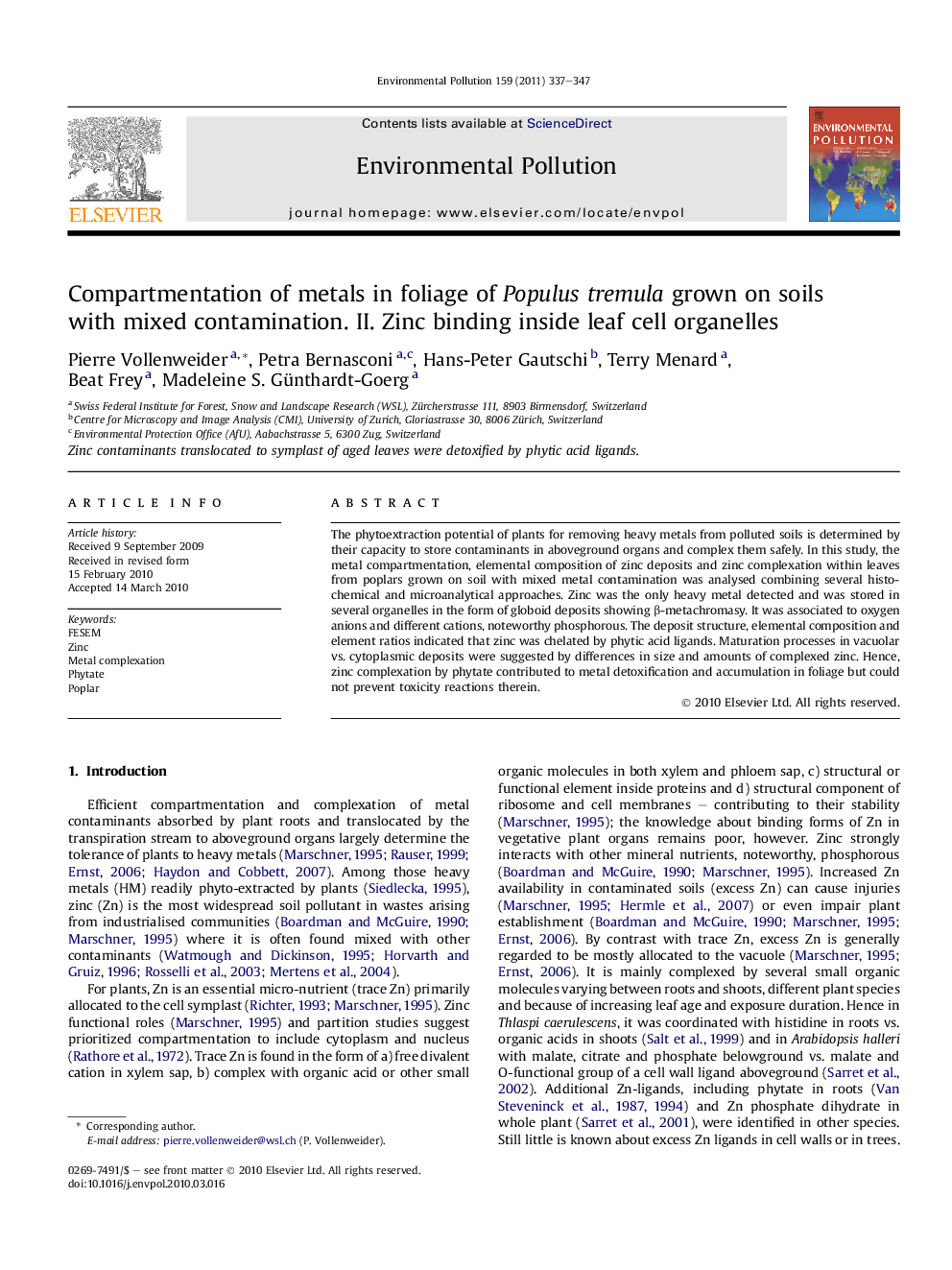| Article ID | Journal | Published Year | Pages | File Type |
|---|---|---|---|---|
| 4425656 | Environmental Pollution | 2011 | 11 Pages |
The phytoextraction potential of plants for removing heavy metals from polluted soils is determined by their capacity to store contaminants in aboveground organs and complex them safely. In this study, the metal compartmentation, elemental composition of zinc deposits and zinc complexation within leaves from poplars grown on soil with mixed metal contamination was analysed combining several histochemical and microanalytical approaches. Zinc was the only heavy metal detected and was stored in several organelles in the form of globoid deposits showing β-metachromasy. It was associated to oxygen anions and different cations, noteworthy phosphorous. The deposit structure, elemental composition and element ratios indicated that zinc was chelated by phytic acid ligands. Maturation processes in vacuolar vs. cytoplasmic deposits were suggested by differences in size and amounts of complexed zinc. Hence, zinc complexation by phytate contributed to metal detoxification and accumulation in foliage but could not prevent toxicity reactions therein.
